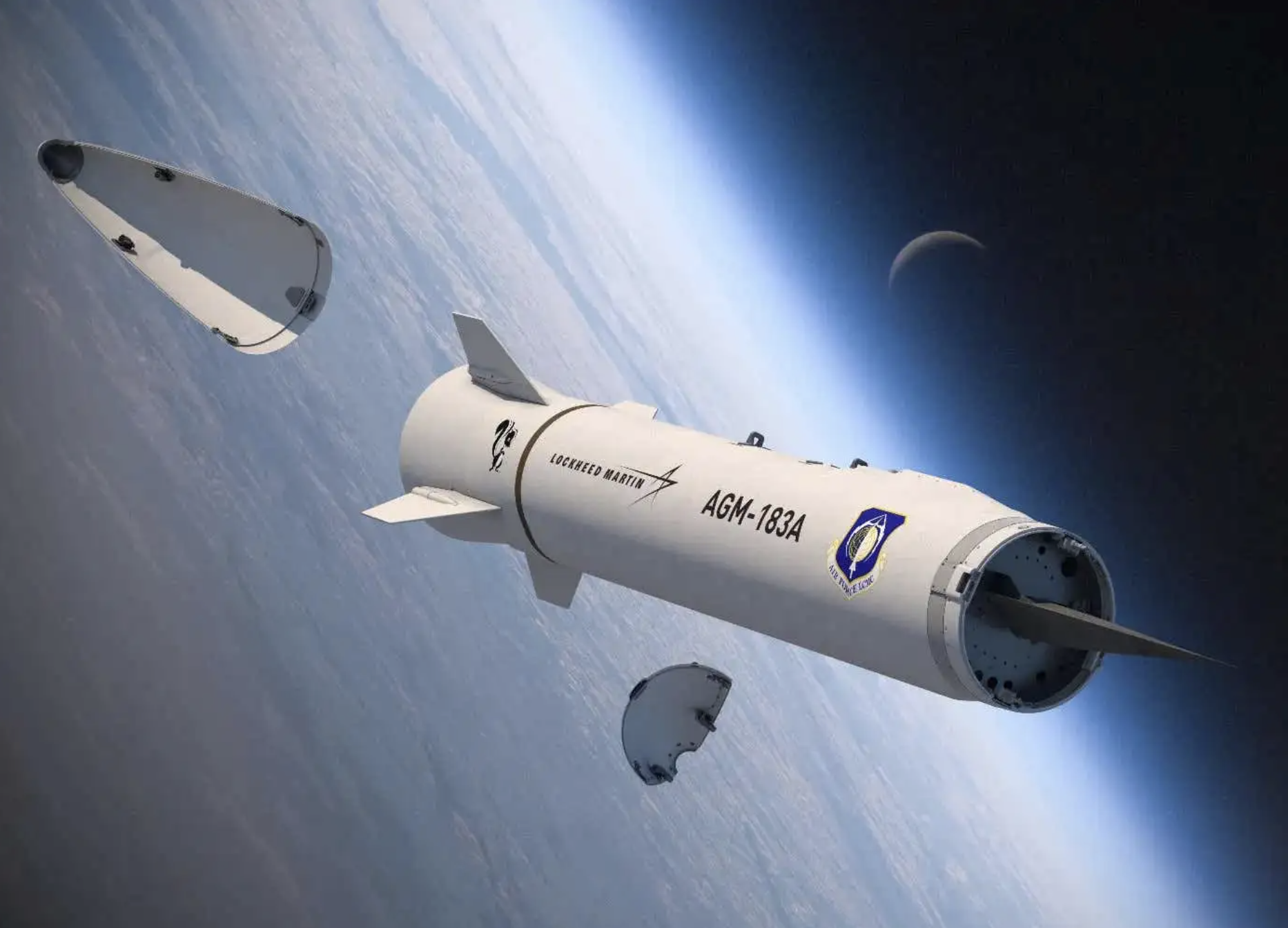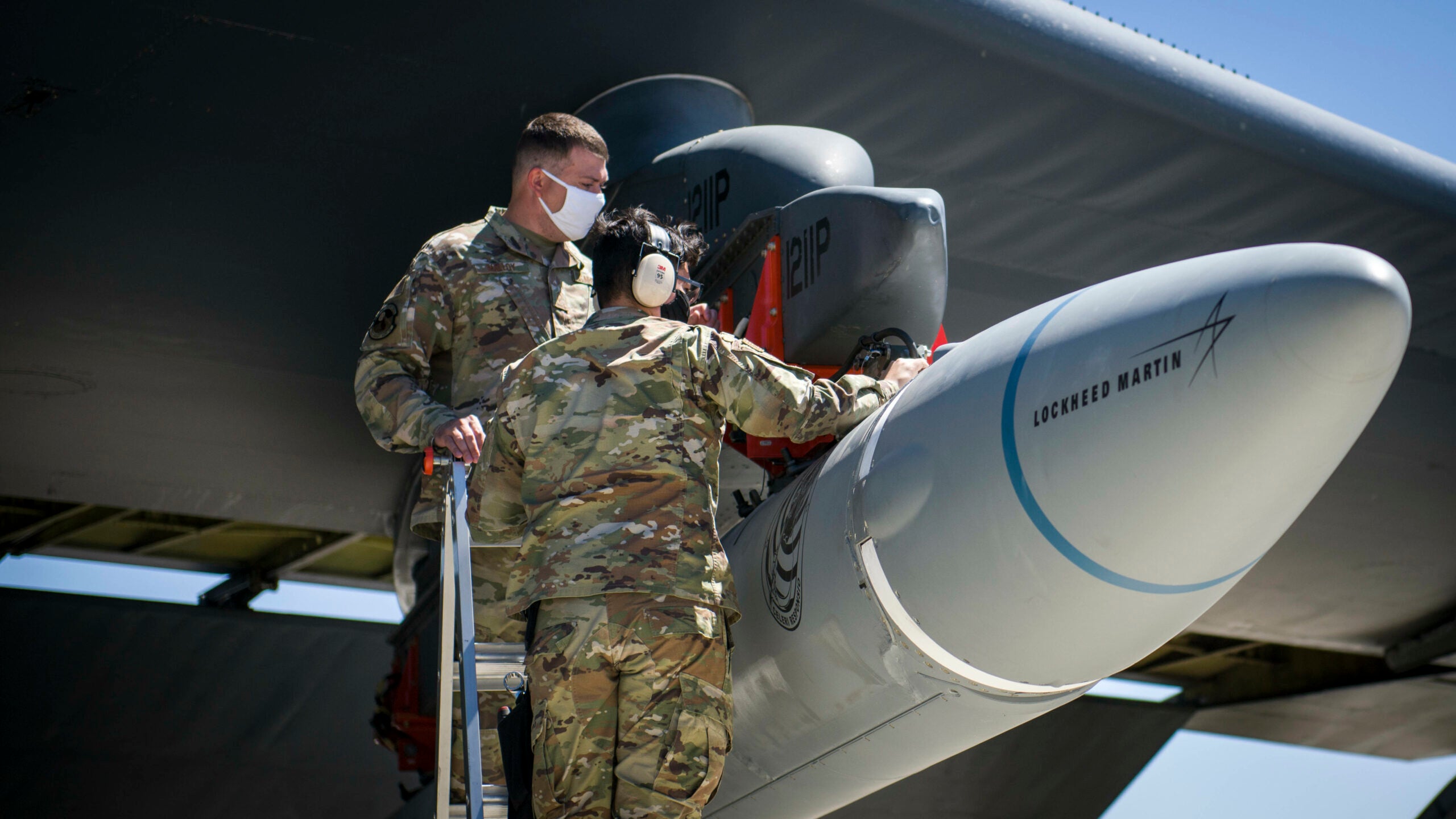The U.S. Air Force says the hypersonic boost-glide vehicle warhead in its forthcoming AGM-183A Air-launched Rapid-Response Weapon hypersonic missile will fly at an average speed of between 5,000 and 6,000 miles per hour. This would be roughly between Mach 6.5 and Mach 8. At that speed, it will take only 10 to 12 minutes to strike targets 1,000 miles away. Air Force Major General Andrew Gebara, Air Force Global Strike Command’s (AFGSC) Director of Strategic Plans, Programs, and Requirements, disclosed the information in an interview with Air Force Magazine.
Expected to be the first hypersonic weapon to become operational with the U.S. military, the Air-launched Rapid-Response Weapon, or ARRW, which is pronounced “arrow,” will be carried by the command’s B-52H strategic bombers.
“This thing is going to be able to go, in 10-12 minutes, almost 1,000 miles,” Gebara said in the interview, which you can read in full here. “It’s amazing.”
This appears to be the first time that the Air Force has officially commented on ARRW’s speed with any specificity. Before now, it was understood that the weapon would be capable of hypersonic speeds, which are simply defined as anything above Mach 5.
To attain hypersonic speeds, the missile consists of a solid-fuel rocket booster, fitted with pop-out tail fins, and an unpowered boost-glide vehicle. After being propelled to a specific speed and altitude atop the rocket booster, the wedge-shaped boost-glide vehicle continues to its target at hypersonic speed.

It’s also worth noting that General Gebara might have been talking about the average speed of ARRW’s boost-glide vehicle warhead. In the past, the Defense Advanced Research Projects Agency (DARPA) had said that the boost-glide vehicle being developed for its Tactical Boost Glide (TBG) program could potentially hit a peak speed of Mach 20. Lockheed Martin is the prime contractor on both of these programs and ARRW’s boost-glide vehicle is understood to be derived from the TBG one.
During flight tests in 2010 and 2011, DARPA’s Hypersonic Test Vehicle 2 (HTV-2), another wedge-shaped boost-glide vehicle, reached peak speeds of Mach 20. The Pentagon has also said that the Common Hypersonic Glide Body (C-HGB), a conical design that the U.S. Army and Navy are developing together, has demonstrated its ability to reach a peak speed of Mach 17.
More information about ARRW’s speed may begin to emerge as live-fire flight testing begins. Presently, the first launches of AGM-183A prototypes are set to take place in October 2021.
Lockheed Martin first received the contract to develop the AGM-183A in 2018. A first captive-carry test flight of an ARRW test round took place aboard a B-52H at Edwards Air Force Base in California in June 2019, and a last such test occurred in August 2020.

The Air Force plans to buy at least eight prototype ARRWs, some of which could potentially be used to field a limited operational arsenal of these weapons in the coming years. The service’s present goal is to reach initial operational capability with the weapon in September 2022.
However, the program is already running behind schedule and this timeline might not be met. It has seen costs spiral by nearly 40 percent and the Government Accountability Office (GAO), a Congressional watchdog, has warned there could be further delays.
Of course, that the B-52 will become the service’s principal platform for the carriage of air-launched hypersonic weapons should come as no surprise, as we at The War Zone have discussed before. The Stratofortress is particularly well suited to fulfilling this role compared to other existing American combat aircraft.
Gebara also confirmed that the B-52 will be able to carry two ARRWs on each of its two underwing pylons. A four-missile load-out is something that we previously anticipated here.

Regardless of which platform carries the ARRW, it’s clear that it will provide the Air Force with a significantly enhanced short or no-notice strike capability, especially against time-critical or otherwise high-value and highly defended targets — providing the next phase of test work proves successful. Combined with its speed and level atmospheric flight profile, the boost-glide vehicle will be able to maneuver in flight, making it even tougher for hostile air defenses to defeat. We explained more about the advances offered by hypersonic weapons in this previous article.
We also now know ARRW has a range of at least 1,000 miles, which will allow its launch platform to remain outside the reach of hostile defenses, at least in most cases.
It’s an area in which the United States is now concentrating its efforts in a bid to match similar developments in both China and Russia.
It is certainly interesting to hear a leading Air Force official muse about the speed of the service’s new hypersonic missile, and the weapon’s ability to strike targets hundreds of miles away in mere minutes makes it clear why the service is so keen to get it into service quickly. However, there are plenty more hurdles to overcome before it becomes an operational part of the U.S. Air Force inventory.
Contact the author: thomas@thedrive.com
